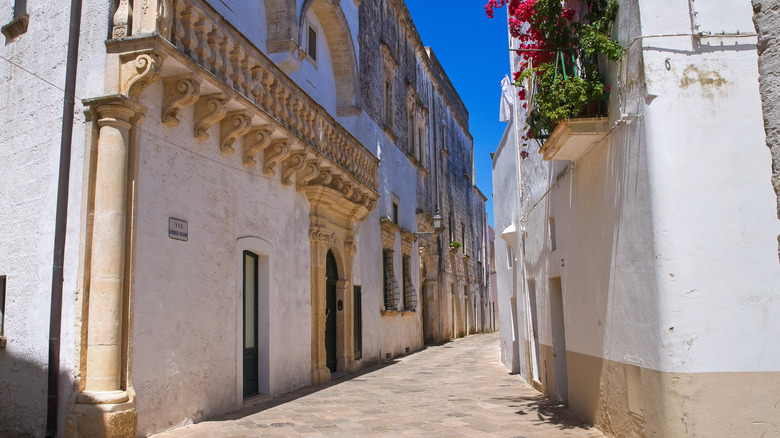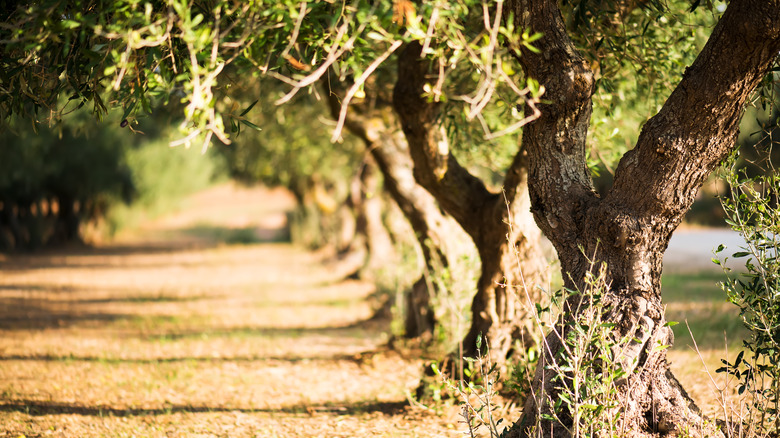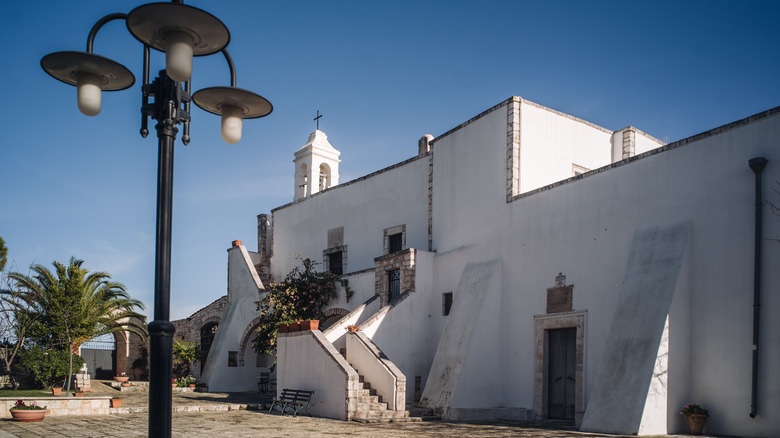This Little-Known Destination Is Regarded As One Of Italy's Most Beautiful Villages
Situated among the rolling vistas in the province of Lecce and just a stone's throw away from the Adriatic Sea, the underrated Italian hilltop town of Specchia is nothing short of a countryside dream. Fondly known as "The Jewel of the Southern Sorrento," this enchanting hilltop town is located in the Specchia highland in Puglia. It's a small yet mighty village in southeastern Italy with a population of nearly 5,000 residents. Surrounded by gently rolling hills, flowering pastures, and groves of olive trees, Specchia is best known for its historic piazzas (town squares), photogenic medieval architecture, and heritage steeped in the olive oil industry.
The history of Specchia's breathtaking architecture is an iconic symbol of this village and dates back to the 9th century. First settled by shepherds and farmers as a refuge from Saracen attacks, it was later occupied by Normans in the 11th and 12th centuries. Specchia's walls underwent countless feuds, battles, and sieges by neighboring territories during the Middle Ages until 1860, when the Plebiscite unified the Kingdom of Naples with the Kingdom of Italy.
The best time to visit this hidden gem is between May and September, when the air is warmer, and you can taste the fresh notes of wildflowers. The Southeastern region of Puglia is one of the most prized areas of the country. This is because its provinces tend to see fewer crowds, are often located centrally to several national parks, and enjoy a slower pace of life.
A village of old and new
Aside from being a quaint square to meander, Piazza Popolo is the home of some of the city's most important architectural structures. This charming town in Puglia retains its original beauty and wonder, as most of its piazzas have been restored without distracting from its founding heritage. The majestic city has been credited as one of I Borghi più Belli d'Italia, meaning "The Most Beautiful Villages in Italy." Among these is Palazzo Baronale Ripa. This magnificent castle was later converted into a residence for Italian noblemen. Today, it looms over the city as a historical monument and a visually pleasing landmark.
Olive oil is the bread and butter of nearly every small town and village in Italy, and Specchia is no exception. Hidden within the city walls are ancient olive oil mills carved between the 15th and 19th centuries. Scupola Underground Olive Oil Mill, located in Centro Storico, and the underground olive oil mills in Via Perrone are just two historic sites where the earliest settlers pressed their wine. The millstones, Genoese, and Calabrian presses are central to Specchia's ancient Italian heritage.
As beautiful as Specchia's mountaintop region is, the nearby beaches are always worth a visit. Torre Pali, in particular, is a strip of paradise perched on the tip of the Lonian coast. This long, golden stretch of sand has been given the moniker "The Maldives of Italy" because of its crystal clear turquoise waters and soft, powdery sand.
Masseria — the luxury villas of Puglia
The region of Puglia, including the village of Specchia, does well to provide visitors with an authentic image of what life was like during its earliest years. From the baroque architecture and traditional recipes passed down through the generations to the boutique hotels dappling the cobblestone streets, visiting Specchia is like stepping back in time. With a strong agricultural and farming history, many villas and boutique hotels were renovated from fortified family farms into luxury lodging sites known as Masseria. The same buildings on which wealthy landowners once grew their crops and tended to their livestock are now a sentimental remnant of daily life in the Middle Ages.
Tucked amongst the groves of olive trees dotted throughout the land, Masseria Curti Vecchi is where visitors can taste summer all year. Located just outside the main village of Specchia, this glamorous property retains its original stonework alongside updated appliances and modern elegance. Central walled courtyards, traditionally styled villas, and manicured lawns comprise most of the estate, connected by adorable cobblestone pathways that snake throughout the property. Shady pergolas and a 67-foot-long swimming pool allow guests to enjoy the splendor of the Italian countryside and the leisure of 5-star accommodations. Given their unique history, a room at one of these estates can cost a pretty penny, with nightly rates beginning at almost $13,000. However, many Masseria allow nonguests to use the estate's amenities for a cheaper daily rate and make reservations at on-site restaurants.


